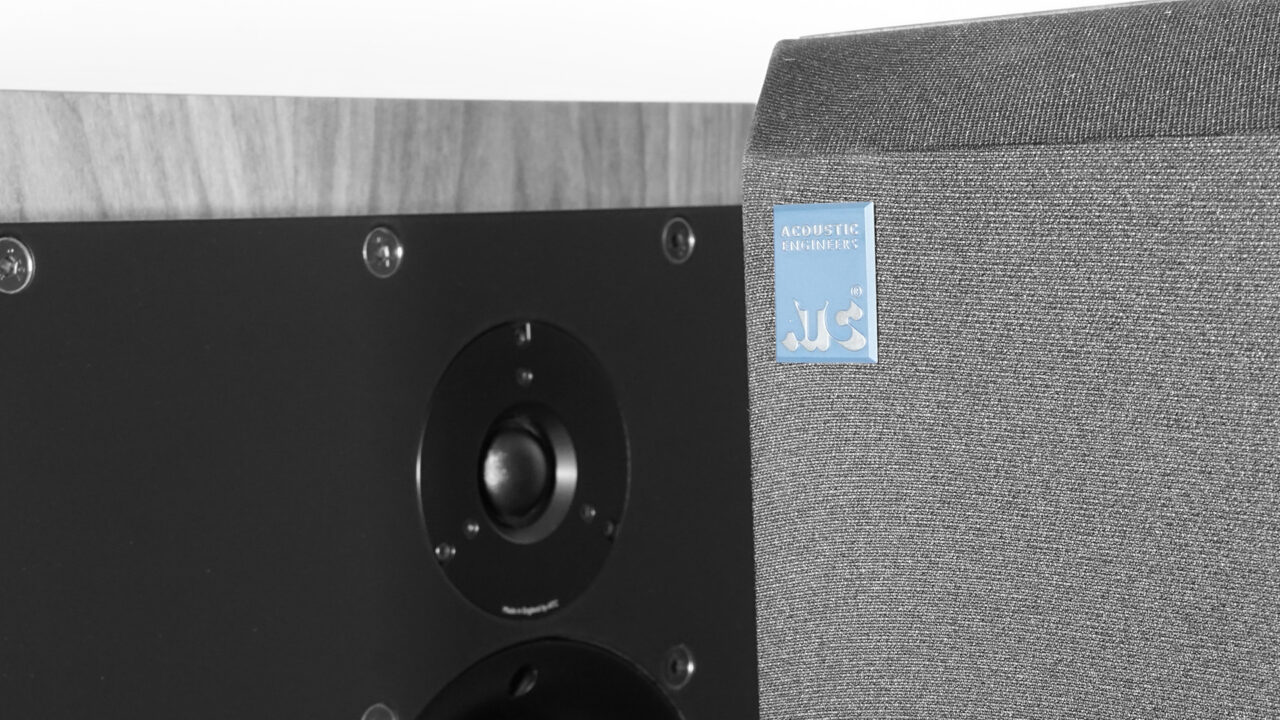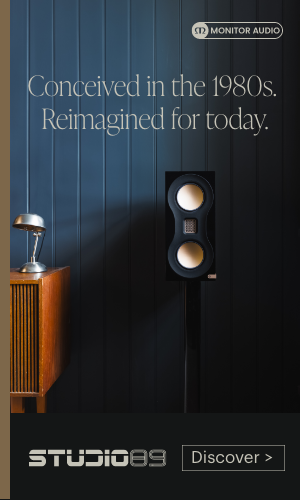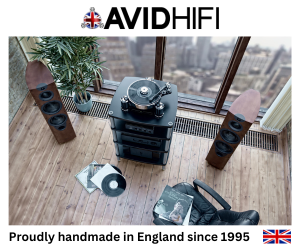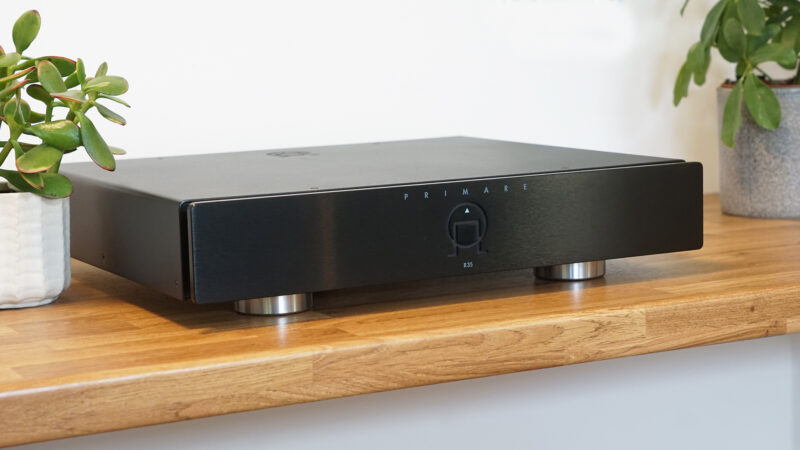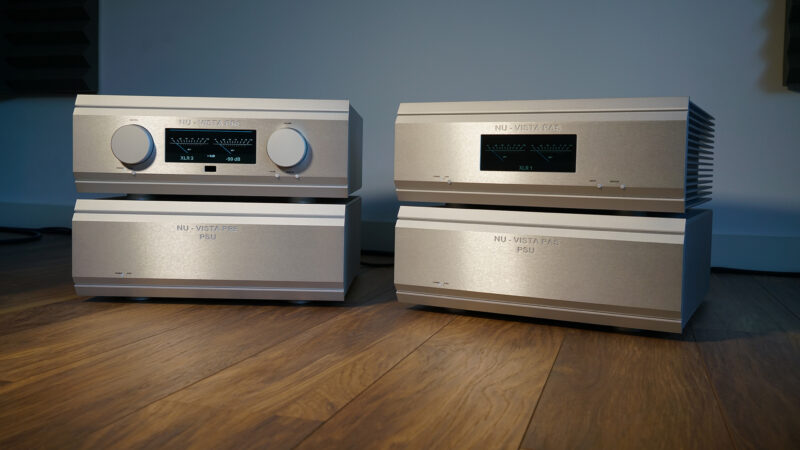Anyone with half an eye on the hifi industry of late will have noticed the current trend for large standmount speakers that hark back to hifi’s perceived glory days, with Mission and Wharfedale getting in on the act alongside mainstays like Spendor and Harbeth.
And it’s easy to see why, as while modern homes and tastes have demanded more slender speaker designs, adorned with smaller drive units (often in multiples to retain decent levels of low frequency output), there’s something undeniably alluring about more traditional loudspeaker designs. Maybe it’s rose tinted nostalgia releasing hifi endorphins into our music addled brains, or it could be our unconscious bias telling us that bigger means better, but either way, I for one welcome it.
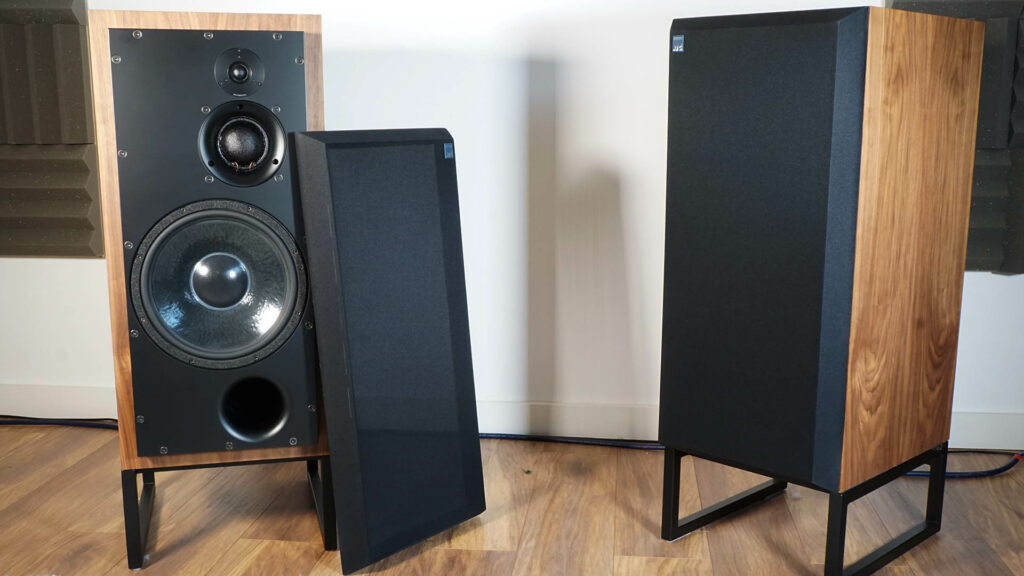
With or without their full covers, ATC’s SCM100PSL are unapologetically well proportioned
There’s one brand though that’s never really been driven by hifi fashion and therefore never stopped making – and evolving – its more traditional looking loudspeakers. And that brand is of course Gloucestershire’s finest – ATC. And why would it? With its hardware being so in demand in the studio and pro mixing markets there’s little time to pander to the latest hifi fashions. Instead it sticks to what it does best, making high quality, reliable pro/consumer electronics with an enviable reputation. You’ve only need to glance through pro audio forums like gearspace.com to see quite how high its reputation is in this arena.
Bucking the trend
The SCM100PSL under review here is cherry picked from the brand’s Classic Series of dedicated standmount hifi speakers (which share drivers and internals with the pro range, albeit in more domestically friendly cabinets). And while this isn’t a new speaker by any means, it’s been evolved over recent decades, meaning the real acid test is how (pardon the pun) it still stands up today.
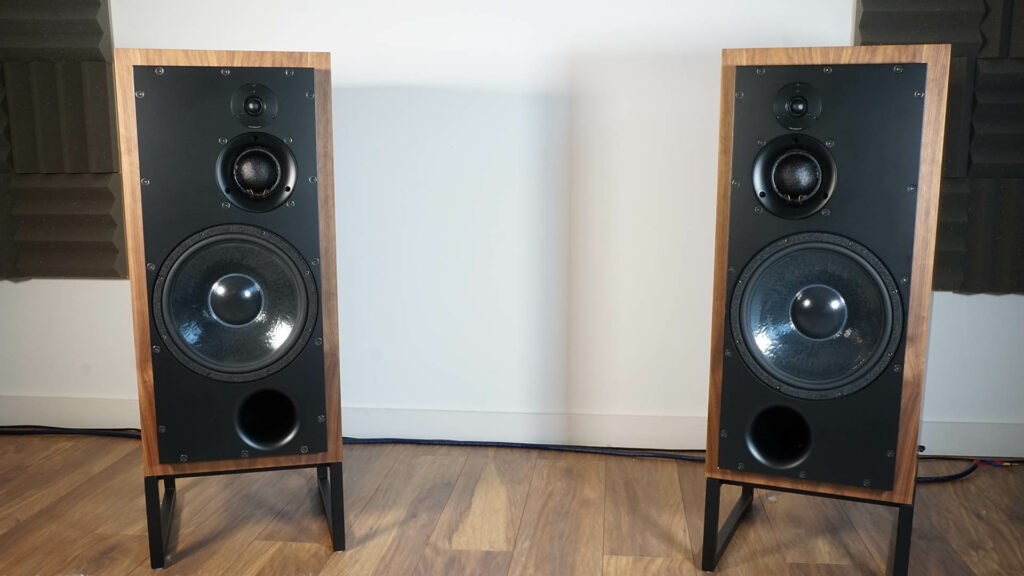
The SCM100PSL in all their uncovered three-way glory
There’s also the Tower Series of course, if you prefer full height cabinets, which mostly mirror the Classics and like them, each model can also be specified in active guise as well as passive, packing multiple internal ATC power amps (as we experienced with the SCM40A back in 2022).
For many the active version may be the obvious choice for an ATC as while it costs more (£19,150 vs £15,100 for the active/passive SCM100 model), given the cost of dedicated quality amps to do these speakers justice and their price tag starts to make sense. But this is domestic hifi, and having more freedom to partner a speaker with pre and power amps of our choosing for wider system integration means going for the passive variant.
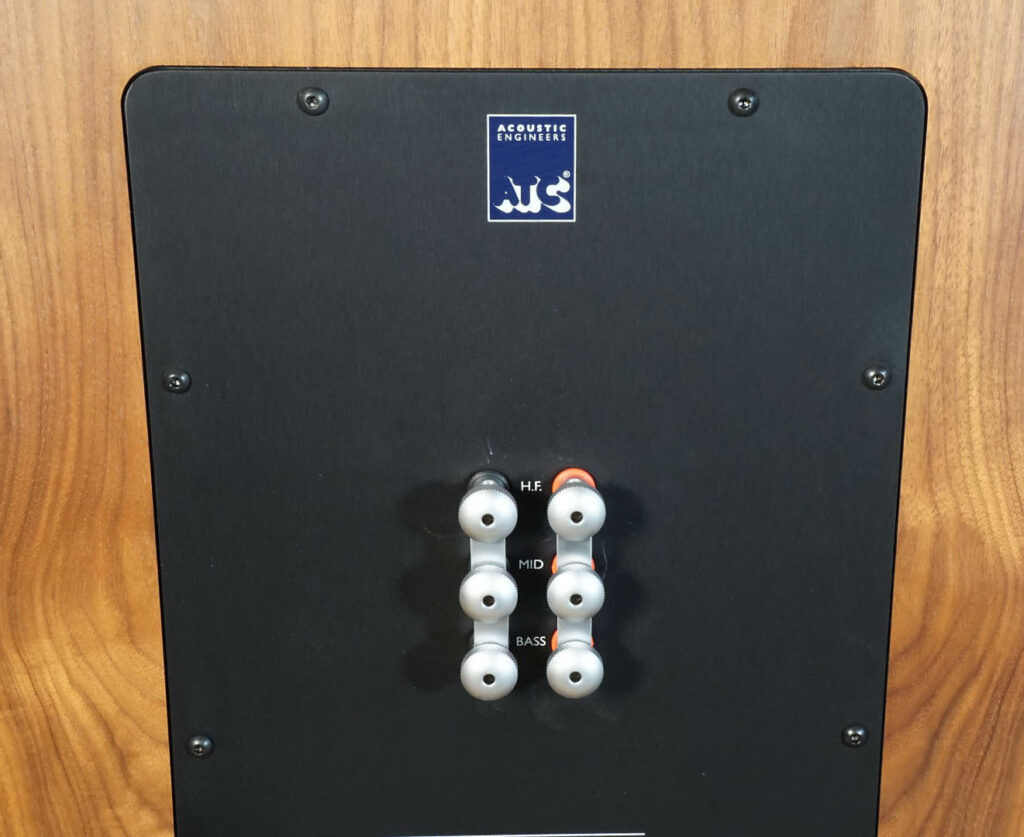
Being the passive model, the SCM100PSL’s rear panel hosts three sets of multiway loudspeaker terminals for tri-wire/amping
The SCM100PSL is the 3rd model up in the Classic range, sitting above the demure SCM20PSL and more similarly configured SCM50PSL, which is the smallest of the three way models and sports a 9″ bass driver. And while the SCM100PSL is not as big as the beefy range topping SCM150PSL (fitted with a whopping 15″ bass driver), make no mistake at 1034 x 400 x 585mm (HWD with stand) the SCM100PSL is a beast of a loudspeaker by anyone’s reckoning (with the 100 in its moniker referring to the internal cabinet volume).
The main reason for its size is of course to accommodate its imposing 12″ bass driver adorning its front baffle, which is the first thing you notice when wrestling each speaker from their boxes (coincidentally this is one of easiest grand speakers to unbox I’ve come across, thanks to sensible packaging which is so much more user friendly than most rivals’ box puzzles).
The bass driver is made from a paper/carbon composite which benefits from the company’s short-coil/long-gap motor and Super Linear Magnet Material (SLMM) technology. The latter works by counteracting the unwanted effects of ‘magnetic hysteresis’, when the input signal is distorted as the steel used in the magnet assembly remains magnetised, even after the signal has been removed. To prevent this, ATC adds extra rings of its magnet material inside and outside the magnetic gap, which claims to significantly reduce 3rd harmonic distortion.
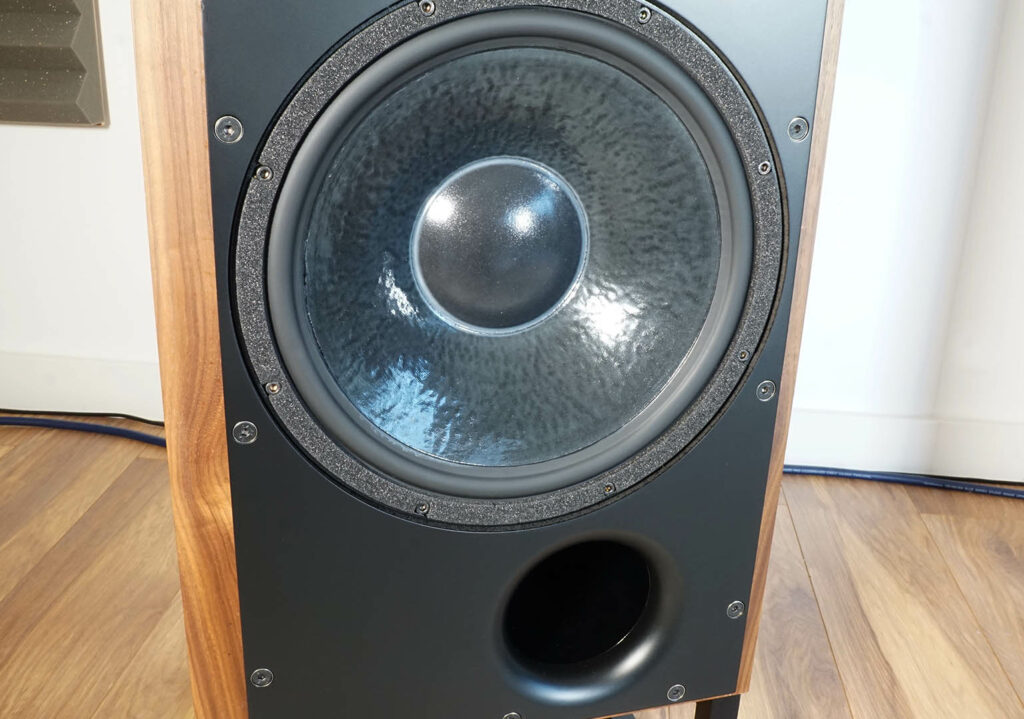
Paper/carbon composite 12″ bass driver is ATC’s own and clearly means business
Extending up from a claimed 35Hz, the bass driver crosses over to ATC’s instantly recognisable and well regarded 75mm large and highly damped woven dome midrange unit at 380Hz. This also sports ATC’s favoured short-coil/long-gap topology, which aides greater control by keeping the coil in the magnetic gap throughout the dome’s excursion.
This then hands over to a 25mm soft dome tweeter at 3.5kHz, which continues up to 22kHz and claims yet more ATC developments, including dual roll-surround suspension rings for improved stability (negating the use of ferro-fluid which can dry out over time) and a copper clad, aluminium ring voice coil.
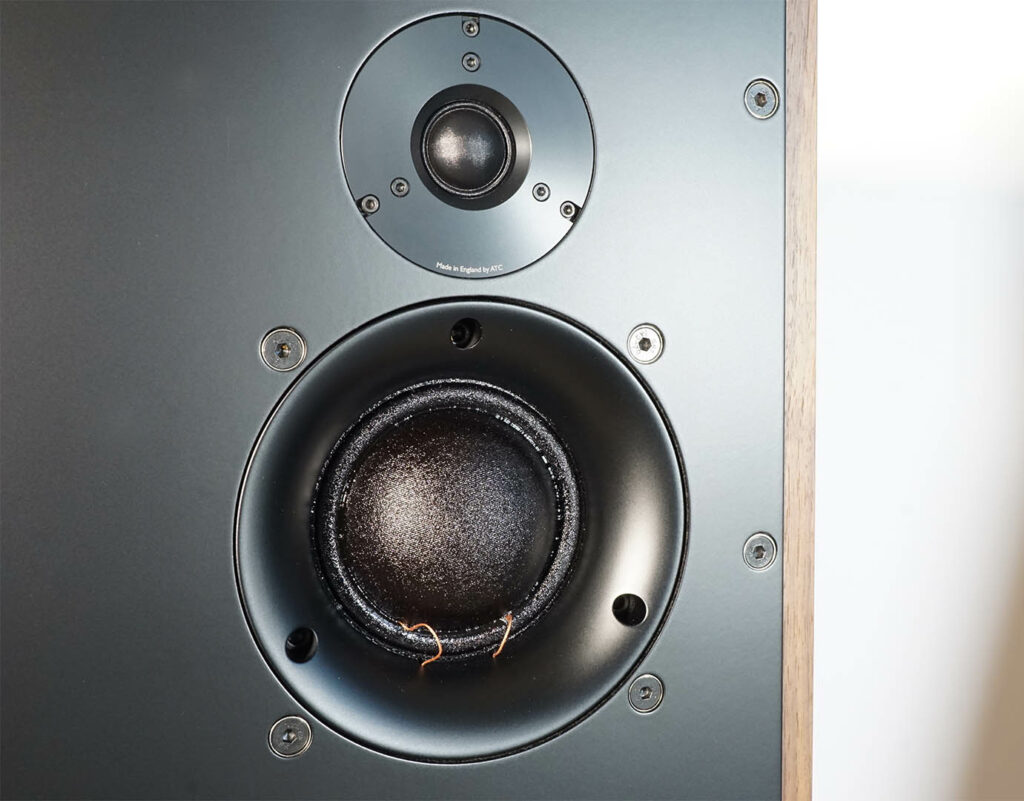
ATC’s well established massive (75mm) midrange unit is inset into its own waveguide, sitting below a 25mm soft dome tweeter
Completing the front firing hardware is what at first glance looks like a large traditional bass port. But unlike most ports which are designed to increase bass extension, ATC’s primary objective is to control bass driver excursion, reducing distortion and benefitting increased bass extension at the same time.
What also catches your eye with their front covers removed is the amount of bolt heads on show, with all three drivers bolted to the 32mm MDF extruded front baffle, that’s then in turn bolted to the main cabinet via its outer edge for a no nonsense industrial construction. At this price any other speaker with so many visible screw heads would have me raising an eyebrow, yet on the ATCs it adds to their charm, denoting how well braced these speakers are. That said if you’d rather avoid eye contact, the framed full front covers are easy to slide into place. Elsewehere the main cabinet is seamlessly clad in gorgeous reel wood veneers with seven to chose from, alongside high gloss finishes.
MDF is the material of choice for the cabinets, which is 18mm thick with added bitumastic damping pads to quash internal resonances, aided by internal horizontal and vertical bracing bars.
Completing the package are sturdy dedicated full width steel stands, with pre-drilled holes for spiked feet, which raises the main cabinets by a little over 200mm.
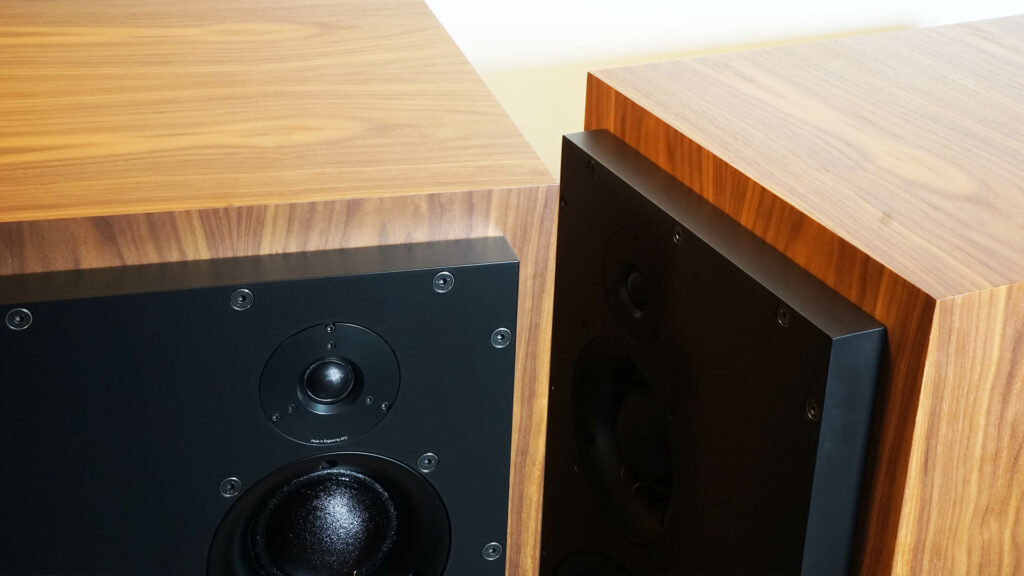
32mm thick front baffle supports all three drivers for added rigidity, standing proud of the main cabinet
Performance
At over 50kg each, you’ll need some extra muscle to get them unpacked and sat nicely on their stands. And as with all large loudspeakers that grace my 30sqm listening room, my first step is to pop some soft pads under the bases/stands so I can slide them around until I find their performance sweet spot before adding spikes. For me this is a good 1.5m away from side walls and 70cm from a rear wall, to let them really breath. I also favour using them with their tweeters and midrange drivers on their inner edges (as per our pics) and with a little toe in, which grants them a firmer acoustic image, while still maintaining an expansive soundstage.
Because of their traditional styling, each speaker’s bulk is mostly accounted for by its width and depth while their height, at a little over 1m tall, is fairly standard for a premium floorstander. This means their midrange and treble units are at ear level when seated, which adds to their focussed presentation (more on this shortly).
Boasting 88dB sensitivity and an 8 ohm nominal load, on paper these ATCs are a friendly proposition for most amps. That said I’d always err on more rather than less power to really grip those large woofers and cabinets, which begins with my workhorse Musical Fidelity M6 pre/power amps.
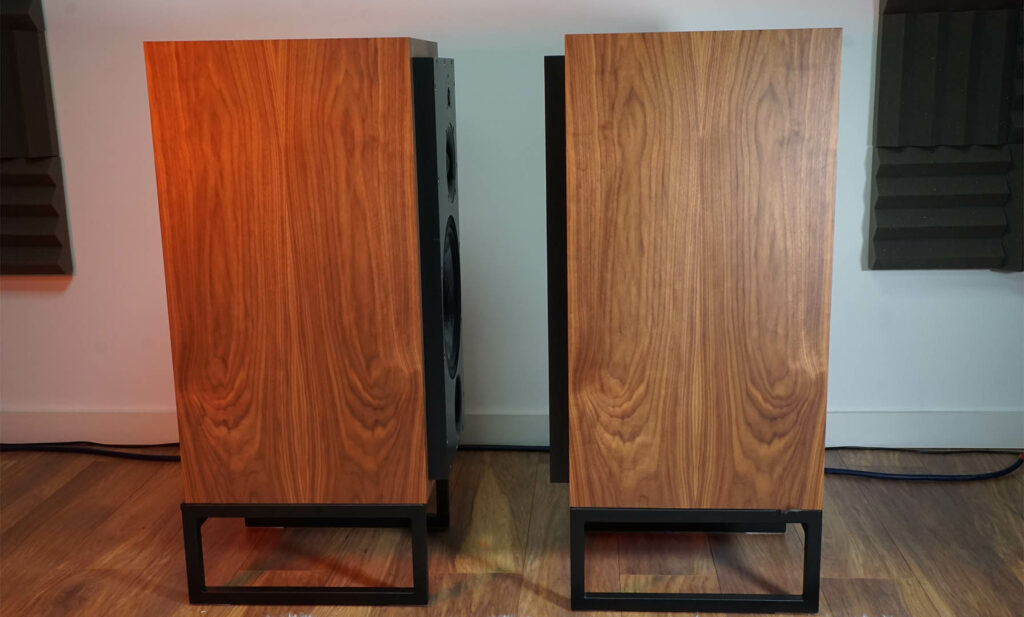
While their cabs are big, you wont tire of admiring their gorgeous finish, and at over 1/2m deep, there’s plenty to admire! Ours came clad in grain matched walnut wood, with several alternative options available (see Specifications section)
After a week of listening, what’s clear is that unlike most hifi speakers, these do not play to the gallery. Instead their stall is set out on delivering an accurate and pure representation of the music, that’s free from colouration, which underlines how tonally voiced many rivals are in comparison.
This isn’t to imply though that the SCM100PSL sound cold or sterile in their music reproduction, but nor are their sonics intentionally warm and soft around the edges. Because what they are is a masterclass in transparency.
Spinning The Weather Station‘s 2017 self-titled LP on an SME 20/2 deck through a Primare R35 phono stage has me hearing deeper then I ever recall into the album’s arrangement, revealing sounds and details that had previously passed me by across a dozen or more high-end loudspeaker rivals. Elements such as how the twelve string guitar resonates with more tonality than the standard acoustic is brought out with degrees of clarity that demonstrates why ATC’s drive units are a mixing engineer’s dream.
And it doesn’t end there, as little details such as the subtle final percussion notes at the end of the track Thirty no longer sound buried or sidelined, as there is very little which escapes these speakers’ attention. The way they throw new light into old records has me acting out that reviewer’s cliche of revisiting albums I’ve known inside out for years, to hear them again in sharper focus. Rumours, Blood On The Tracks, Bryter Layter and the list goes on… have all seen countless hours on my platters but are given new life and energy through the ATCs, such is the window that they throw into recordings.
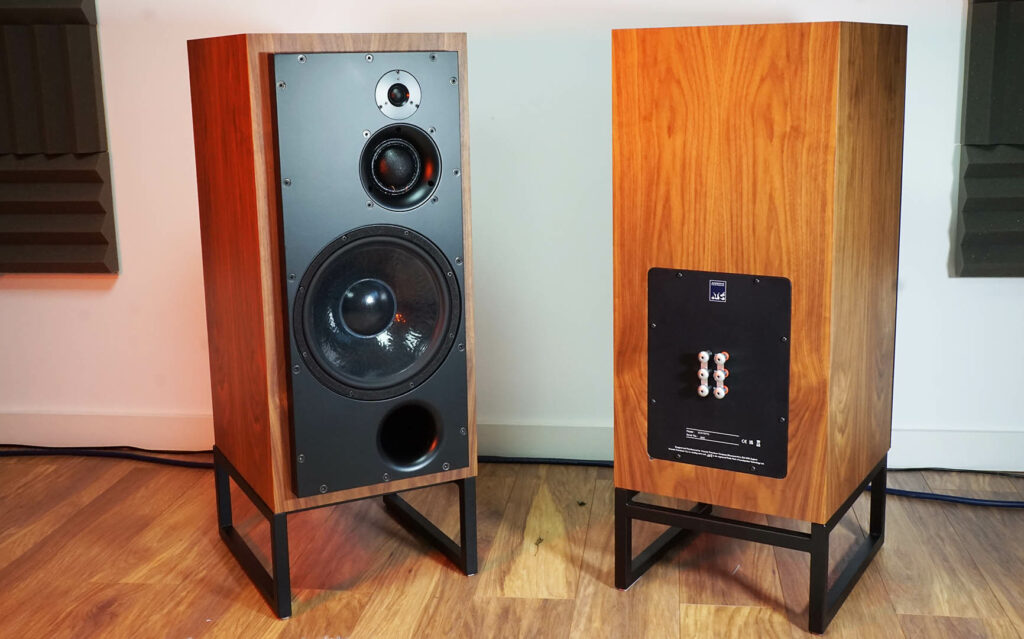
Lack of rear ports means they can be positioned closer to a rear wall if you must, but they sound more open with some space behind them
Pushing the envelope
What I’m also sensing is how much further these speakers can push the envelope given the chance. And while I’m toying with the idea of picking up the phone to get the active versions here quick smart, I plumb in a Rotel Michi X5 integrated which pulls me straight back to the listening chair. Not only is this amp more powerful than the MF combo (350W vs 230W p/c into 8 ohms) it’s also a much cleaner and more neutral sounding amp, which proves a better and more accomplished match for the ATCs.
Revisiting The Weather Station LP for example and while the vocals were beautifully imaged and fluid sounding via the MFs, with the Rotel supplying the juice the ATCs’ midband and treble really open up, manifesting itself in areas including Tamara Lindeman’s vocals. Oh those vocals…delivered with a realism that’s as beguiling as it is effortless.
What also changed during my time with these speakers is my preconceptions of ATC’s ‘house sound’. Having read many a rival review that hinted at the product line being more ruthlessly revealing than most or lacking degrees of emotion, not only are neither presumptions true, they also miss the point of what ATC strives for, which in a word is ‘honesty’. Feed them a duff or mediocre recording and that’s what you’ll hear. They won’t overemphasise the negatives but nor will they polish them or mask them out with an overblown bottom end or forward midrange for example, to distract your attention.
The flipside to this though is what happens when you feed them a quality recording, where you’ll be rewarded with a sound that’s often nothing short of astonishing.
Hearing Peter Gabriel’s era-defining Sledgehammer for example via a Primare NP5 Prisma MKII/NP30 streamer/DAC at 24-bit/96kHz and the speed and detail within the production is captivating, as the ATCs fill my room with layered and rich dynamics, packed with pile driving funk and frenetic fizz at the extremes. The percussion is glass shatteringly clear, while the grip on the walking bassline’s firmly plucked strings is get up and boogie commanding. Despite this being the track I enjoy the least on this album, it’s hard not to reach for repeat listens because what I’m hearing is how it should sound, thanks to the ATCs.
With drive units this large you may be expecting me to wax lyrical about subwoofer levels of low frequency extension, powerful enough to warrant a Met Office gale warning. But instead what the SCM100PSL major on is bass control. Big bass drivers tend to deliver plenty of scale and weight, but the trade offs can be slower recovery and some muddying. Not so with the ATCs, which is a testament to their engineers in just how well they’re able to control a driver of this size in real world conditions.
And all of this combined underlines the word that cropped up the most in my listening notes across all the music that passed through these speakers – balanced. The following track Don’t Give Up on the Gabriel album illustrates this point well, as the dreamy vocal harmonies and intentionally slow rhythm are the elements that get under your skin, but hearing how the bass guitar solo on the outro is articulated as the pace picks up with force, impact, texture and feeling shows how well accomplished this speaker is across the frequency range.

Understated branding is typical ATC, which lets its products’ performance do the talking
In summary
Powerful, articulate, neutral, effortless recovery…I could go on as all these qualities apply in equal measure to these speakers. And its the equal part that’s the lesson here, as the ATCs don’t favour one element over another, because it is an exceptionally evenhanded loudspeaker that offers a genuinely transparent window into the music. Providing you’ve the right amp to do them justice, they’re also incredibly non-fatiguing thanks to how distortion free and uncoloured they are.
While similarly priced rivals may excel or impress in some areas beyond the ATCs, few are as accomplished across the board. And while others may be formed from more exotic materials in easier on the eye packages, the SCM100PSL is a thoroughbred with a clear purpose, to replay music as accurately as possible, and in doing so, sets the benchmark as best in class.


